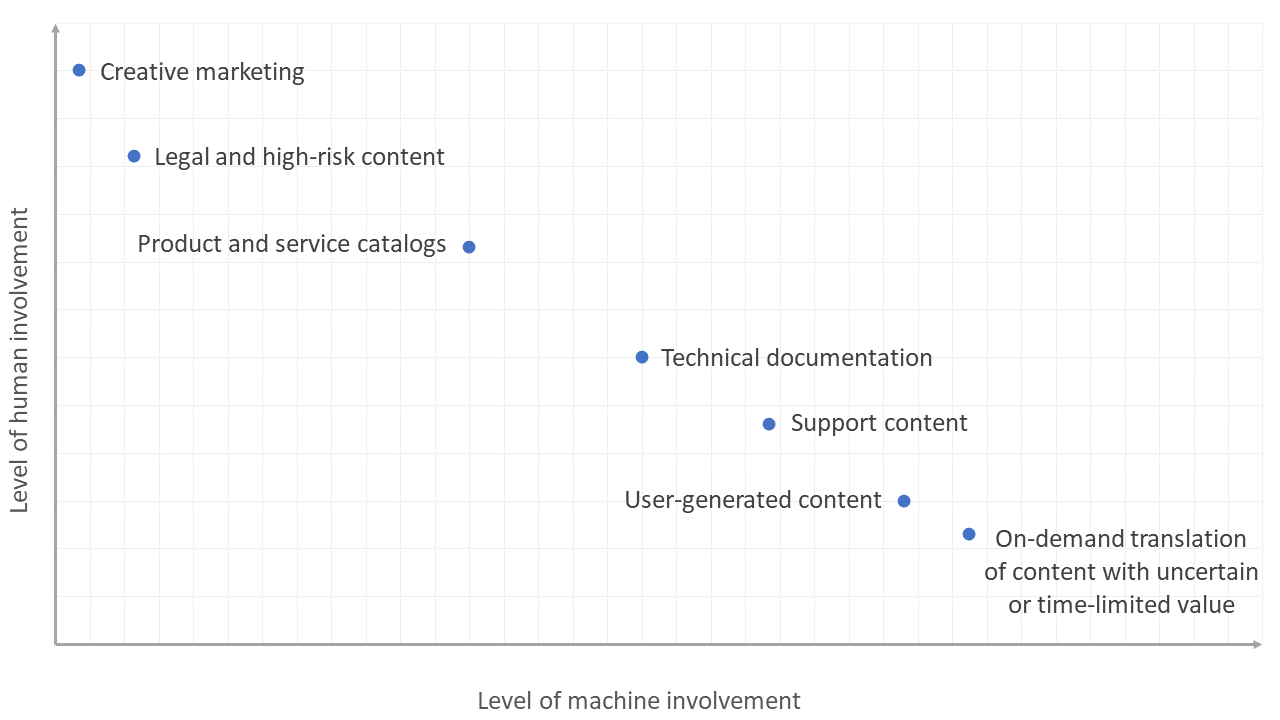Stay Local While Going Global: Product Localization Playbook
Are you thinking about launching your product in a new market? Or do you perhaps already have a global presence but want to enhance your localization strategy? This playbook is your roadmap for a successful product launch in new markets. Discover how effective localization goes beyond mere translation, resonates deeply with local audiences, and opens up new business opportunities.

Entering new markets: Launch essentials
Launching your product in a new market might be intimidating. There are many things to consider, and it’s easy to get lost in the process. However, with the right strategy and tools, you can successfully launch your product in a new market and reach new customers. Before you begin localizing your product, consider asking yourself the following questions:
- Where do I want to launch my product? What is the new target market?
- What is my brand identity and tone of voice? How do I want to adapt communication with my customers in the new market?
- Are there any legal requirements I need to consider?
- Are there any cultural differences I need to consider? (local holidays, traditions, colors, symbols, etc.)
- What parts of my product should be localized, and how?
- What is my budget and timeline for localization?
These (and many more) questions will help you define your localization strategy and set the right goals for your localization project. Remember, localization goes far beyond simple translation; it involves adapting your product or service to meet a specific target market’s linguistic, cultural and regulatory demands. The ultimate goal is to deeply resonate with the local audience, align with their preferences, and exceed their expectations.
Why does localization matter?
One of the most compelling reasons for investing in product localization is its undeniable impact on consumer behavior. Studies have consistently shown that consumers are more likely to engage with and purchase products presented in their native language. According to CSA Research, a staggering 76% of online shoppers prefer to buy products with information in their native language, and 40% will never buy from websites in other languages.
Furthermore, the potential of global markets is immense. Surprisingly, it takes translating into just 14 languages to reach 90% of the world’s online Gross Domestic Product (GDP). This highlights the substantial business opportunities that localization can unlock for businesses willing to expand their reach.
Localization allows you to connect with local audiences more deeply. You can build customer trust and loyalty by adapting your products and marketing materials to each market’s language, culture, and legal requirements. This can lead to increased sales, market share, and brand awareness.
Market research
Market research is a fundamental aspect of successful product localization. It involves gathering and analyzing data about the target market to understand its unique characteristics, preferences and cultural nuances. Market research provides crucial insights that help tailor the localization strategy and ensure the product’s relevance and acceptance in the new market.
Comprehensive market research begins with identifying the target market and analyzing its demographics, language preferences and consumer behavior. Understanding the target audience’s needs and desires allows for the creating of localized content that resonates with potential customers.
Your market research should also extend to competitor analysis. Understanding the competitive landscape in the target market allows you to position your localized product effectively and identify unique selling points that differentiate it from competitors.
It empowers you to make informed decisions, refine your approach, and tailor the product to meet the specific needs and preferences of the target market. Investing time and effort into comprehensive market research can maximize the potential for success in new markets and foster positive relationships with your international customers.
Brand identity and tone of voice��
Building and maintaining a consistent brand identity and tone of voice across different markets is critical to successful product localization. Brand identity refers to unique characteristics, values and attributes distinguishing a brand from competitors. Tone of voice, on the other hand, pertains to the communication style and language used to convey the brand’s personality and values.
A perfect illustration of a brand that has successfully maintained its identity and tone of voice across different markets is Coca-Cola with its “Share a Coke” campaign. The campaign was launched in Australia in 2011 when the company printed 150 of Australia’s most popular names on Coca-Cola bottles. In China, for example, the bottles included phrases like “classmate” and “close friend” instead of names. Chinese naming conventions can be complex, and using generic phrases ensures cultural sensitivity and avoids potential misinterpretations or unintended meanings.
Here are some considerations for maintaining brand identity and tone of voice during product localization:
- Brand guidelines: Create comprehensive guidelines that outline the core elements of your brand’s identity, including logo usage, color palettes, typography and messaging. These guidelines should be adaptable to different cultures while retaining the essence of your brand.
- Tone adaptation: One of the key challenges in product localization is adapting the brand’s tone of voice to resonate with diverse audiences while maintaining its authenticity. Different cultures and markets have varying communication styles and preferences. What may be considered humorous or friendly in one culture might be perceived differently in another. Therefore, it’s crucial to conduct thorough research and understand the cultural nuances and sensitivities of the target markets.
- Brand name and taglines: When localizing a product, consider the brand name and taglines carefully. Sometimes, the brand name or tagline might include clever wordplay or a cultural reference that works perfectly in the source language. Still, it could lose its impact or even create unintended meanings in the target language. It is essential to conduct linguistic and cultural checks to ensure the chosen brand name and taglines are appropriate, respectful and aligned with the brand’s identity.
Legal requirements
In addition to the technical and operational aspects of product localization, addressing the legal regulations and requirements while entering new markets is crucial. Ignoring legal considerations can lead to compliance issues, potential lawsuits and damage to your brand reputation.
One recent example – in 2021, TikTok was fined €750,000 by the Dutch Data Protection Authority for a missing Dutch translation of their Privacy Policy, violating the GDPR.
Let’s take a closer look at some crucial legal considerations:
- Intellectual Property Rights (IPR): Before launching your product in a new market, thoroughly review intellectual property laws in that region. Protect your trademarks, copyrights, and patents in the target market and ensure no conflicts with existing registered rights. Failure to do so might result in infringement claims or difficulties protecting your brand in the local market.
- Data privacy and security: Data privacy regulations vary significantly across countries, with some jurisdictions having strict laws protecting personal data. Ensure that your product complies with the data protection laws of the target market. This includes obtaining consent for data collection and processing and providing transparent privacy policies and data breach notifications.
- Product compliance: Different countries have various product safety and compliance standards. Ensure your product meets the target market’s safety requirements, certifications and labeling regulations. Some countries also have specific accessibility requirements for digital products, especially government or public-facing services. Failure to comply with these standards can result in product recalls, fines, or even bans on selling your product.
- Taxation and import regulations: Understand the tax implications of selling your product in a new market. This includes VAT/GST rates, customs duties, and other import or export regulations. Non-compliance with tax laws can lead to financial penalties and delays in product distribution.
Cultural differences
You should also consider the cultural differences of the new market. Cultural nuances play a significant role in shaping consumer behavior, preferences and expectations. Ignoring or overlooking these differences can lead to misunderstandings, offense, and even the failure of your product in a new market.
A great example is the UK telecom company Orange campaign from 1994. The campaign launched with the slogan “The future’s bright… the future’s Orange”. However, this didn’t resonate well in Northern Ireland, where orange represents the Orange Order, a Protestant fraternal organization. This suggested that the future is Protestant — in a country where the majority is Catholic.
You should keep in mind the following aspects when addressing cultural differences in your product localization strategy:
- Symbolism and imagery: Across cultures, various symbols, colors and images can carry different meanings and connotations. For example, while the white color symbolizes purity in Western cultures, it represents mourning in some Asian cultures. Careful consideration of visuals is necessary to avoid misinterpretations.
- Local holidays and traditions: Be aware of local holidays, festivals and traditions in your target markets. Aligning your marketing and product launches with these events can create a strong connection with the local audience. However, ensure your efforts are respectful and genuine, avoiding cultural appropriation.
- Cultural norms, religion and taboos: Understand the cultural norms, religion and taboos in the target market to ensure your product and marketing materials do not inadvertently offend or alienate potential customers. Respect for local customs can go a long way in building a positive brand image. Also, be cautious when using marketing campaigns that involve humor, cultural references or stereotypes. What may be well-received in one culture can be perceived negatively in another.
- Payment methods and preferences: Different regions may have distinct preferences. Some prefer cash transactions, while others are more comfortable with mobile payments or credit cards. Adapting your payment options to suit local preferences can enhance customer convenience.
Localization strategy
Once you have done your market research and defined your brand identity and tone of voice, you can start creating your localization strategy. Your localization strategy should include the following steps:
- Decide what parts of your product should be localized and how.
- Set your localization budget and timeline.
- Establish your localization metrics and KPIs.
- Assign roles and responsibilities in the localization process.
- Define your localization tools and processes.
1. What and how to localize
First and foremost, you should decide what parts of your product should be localized. Some parts of your product may not need to be localized; it depends on your product and target market. For instance, you might need to localize the following:
- User interface
- Website and marketing content
- Documentation
- Legal documents
- Customer support
Once you have decided what to localize, you should define how to localize the content. There are two main approaches to localization: human translation and machine translation. Human translation means translating content exclusively with the help of a human translator – it might be more accurate but expensive. Machine translation means translating content by a machine with an optional additional step of post-editing conducted by a human translator – it might be cheaper but less accurate. Both approaches have pros and cons; some content is more suitable for human translation, e.g. website content, while others are more suitable for machine translation, namely documentation and user-generated content. The following diagram shows typical content types and their suitability for human and machine translation:
 Source: CSA Research, edited
Source: CSA Research, edited
When localizing your product, consider a hybrid approach of human-machine translation for the best results. Use human translation for critical content like user interface and marketing materials to ensure accuracy and cultural adaptation. At the same time, leverage machine translation for less sensitive content such as documentation and user-generated content, and then have it post-edited by human translators to strike a balance between cost-effectiveness and quality.
2. Budget and timeline
Creating a comprehensive localization strategy involves defining a clear budget and timeline for your project. Your budget will determine the scope of localization and the resources you can allocate to the process. Remember that localization is an investment in expanding your market reach and enhancing customer satisfaction in foreign markets.
When setting your budget, consider the costs of translators, localization tools and technologies, post-editing of machine-translated content (if applicable), and any cultural consulting that may be required to ensure cultural appropriateness. In many cases, budgets are calculated based on the expected revenue from the new market.
The timeline is equally crucial, as it sets the pace for your product’s entry into new markets. Determine realistic deadlines for each stage of the localization process, from translation and quality assurance to implementation and testing. Rushing the process can lead to errors and compromised quality, while adopting a very slow pace can result in missed market opportunities.
Remember, effective localization takes time and effort, but with careful planning and resource allocation, you can ensure a successful launch of your product in new markets.
Creating a budget and timeline for your localization project requires incorporating flexibility to accommodate unforeseen challenges or opportunities that may arise during the process. Factors like unexpected linguistic complexities, cultural nuances, or last-minute changes can impact your localization plan. Allowing for some buffer time and resources can help you stay on track and ensure a smoother localization journey.
3. Metrics and KPIs
Metrics and KPIs in localization are essential because they help you measure the success of your localization process. On the other hand, measuring the success of your localization process could be challenging as localization doesn’t generate revenue directly but indirectly through increased sales and customer satisfaction. It’s always best to use those KPIs that make sense for your project. Consider these examples of localization metrics and KPIs:
- Linguistic quality metrics: These metrics measure the quality of your translations. You can use the DQF-MQM error typology – the industry standard for linguistic quality evaluation, developed by TAUS.
- User experience metrics: User experience metrics will help you understand how customers in the new market feel about the localization. You can use Customer Satisfaction (CSAT) to measure the user experience of your localized product by asking your customers to rate how natural the language sounds on a scale from 1 to 5.
- Project management metrics: These metrics help you measure the efficiency of your localization process. You can measure the percentage of on-time deliveries or the percentage of projects that are delivered within budget.
- Business metrics: You can also use business metrics to measure the success of your localization process. These can be the target market share, customer retention rate, active monthly users, etc.
- Cost metrics: The metrics can give you valuable insight into how much money you spend on localization. You can use, for example, the cost per word to measure the cost of your localization process.
- Website metrics: Website metrics are a great way to see how your localized website is performing. You can use, for example, the bounce rate to measure how many visitors leave your website without taking any action and compare this number with the bounce rate of your original website.
In the process of selecting metrics and KPIs for your localization project, it’s essential to focus on a combination of qualitative and quantitative measures that align with your business goals. Prioritize customer-centric metrics, such as linguistic quality and user experience, to ensure your localized product resonates with the target market.
4. Roles and responsibilities
Roles and responsibilities can make or break your localization process. You should assign roles and responsibilities to your localization team and ensure everyone knows their responsibility. In an ideal world, you should have a localization manager responsible for the localization process and a team of localization and language specialists responsible for the localization itself.
The responsibilities of the localization team could range from localizing content, through evaluating localization quality, to developing localization workflows. The responsibilities and size of the team depend on the complexity of your product, the target market, whether and how you want to measure the success of the localization, your budget and timeline, as well as other factors.
As localization heavily depends on the source content, you should also assign roles and responsibilities to your content team. The localization manager should then work closely with the content team to ensure the source content is suitable for localization.
In addition to assigning roles and responsibilities, fostering effective communication and collaboration between all members of the localization and content teams is crucial for a successful localization process. Encourage regular meetings, feedback sessions, and open communication channels to address challenges, share insights, and ensure everyone is on the same page.
5. Tools and processes
Selecting the appropriate tools and processes for your localization project is crucial based on the localization strategy you have defined in the previous steps.
Ensure that the tools you opt for align seamlessly with your localization strategy. For instance, if Machine Translation (MT) is necessary for your project, choosing a Translation Management System (TMS) that fully supports this feature is critical. Additionally, if your aim is to assess the effectiveness of your localization efforts, devise a method to gather and analyze relevant data.
Likewise, the processes you implement should complement your localization strategy. When incorporating MT, consider creating a process for post-editing the machine-translated content within the TMS to ensure optimal results. If you’re using a TMS, you can also create a process for managing the translation workflow, from translation to reviewing and approving the translated content.
Don’t forget to regularly review and update your tools and processes as your localization project progresses. Technology and industry best practices evolve over time, and staying up-to-date will help you optimize your localization efforts and ensure long-term success.
Localization strategy examples
McDonald’s
Even though McDonald’s is a global brand and is considered a globalization behemoth, they still localize their products to fit the local market. In India, McDonald’s replaced the two traditional beef patties in a Big Mac with chicken ones to create the Maharaja Mac. The reason for this change is that in India, cows are considered sacred animals, and in most states of India, there is a law prohibiting beef consumption.
In the Philippines, McDonald’s has introduced McSpaghetti to their menu. The dish combines spaghetti noodles, tomato sauce and grated cheese. This change is due to the fact that spaghetti is a popular dish in the Philippines and is often served during birthday parties.
Uber
Uber is an excellent example of a company offering genuinely local services. In 2015, Uber launched UberAuto, which allows users to book an auto-rickshaw in India. As cash is a common payment method in India, Uber has also decided to allow users to pay for their rides in cash.
Slack
Slack has localized its product into more than 10 languages while maintaining a consistent brand identity and tone of voice. In their blog post, How we localize Slack, they show examples of how they localized (not just translated) messages and icons in their product. For example, the message displayed when you’ve read everything in your “Unreads” section, ”You’re all caught up. Here’s a pony”, does not make sense in Spanish. So in Spanish, they localized it as “Has leído todo. Aquí tienes un caramelo de regalo”, meaning “You’ve read everything. Here’s a candy gift” – the accompanying icon was also changed to a candy.

Conclusion: Product localization for global expansion
In conclusion, effective product localization is vital for expanding into new markets and connecting with diverse audiences worldwide. It goes beyond translation, encompassing cultural understanding and language adaptation. By considering market research, brand identity and tone of voice, you can create a strong localization strategy that resonates deeply with local consumers, fostering meaningful relationships and driving sales.
Understanding cultural differences, symbolism and imagery is crucial to align the localized product with local preferences and avoid misinterpretations. Addressing legal considerations such as intellectual property rights, data privacy and product compliance is essential to safeguard brand reputation. With a clear budget, timeline and relevant metrics, you can streamline the localization process and maximize success in new markets.
💡 Do you have any questions regarding product localization? Or do you have specific questions related to your project? Feel free to join our Slack community to discuss them with us!

